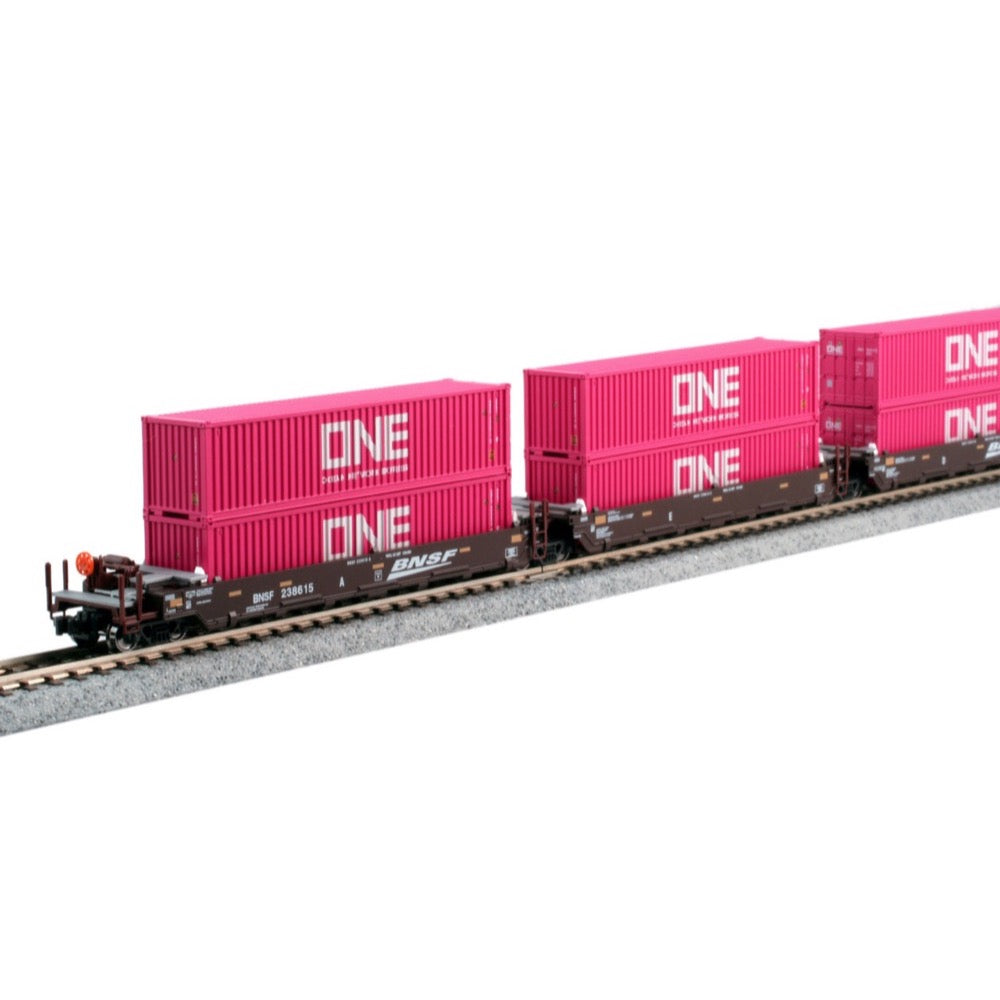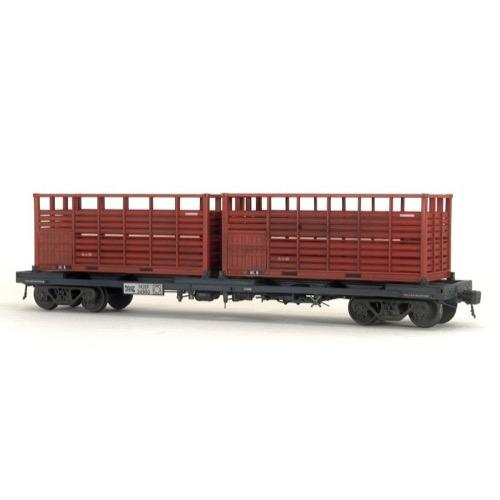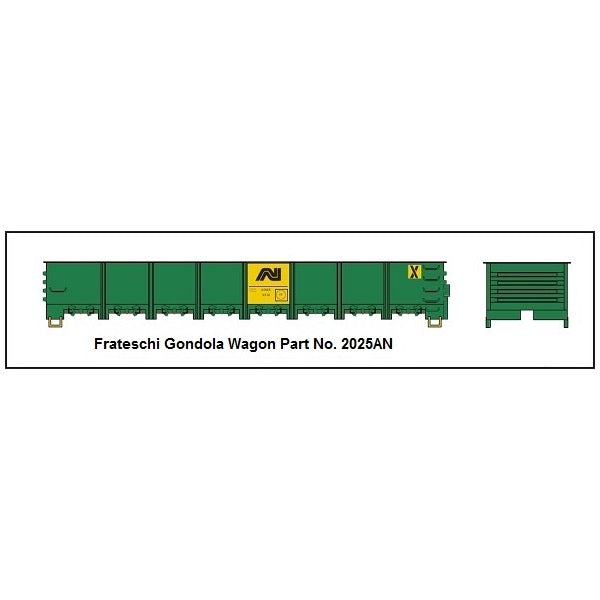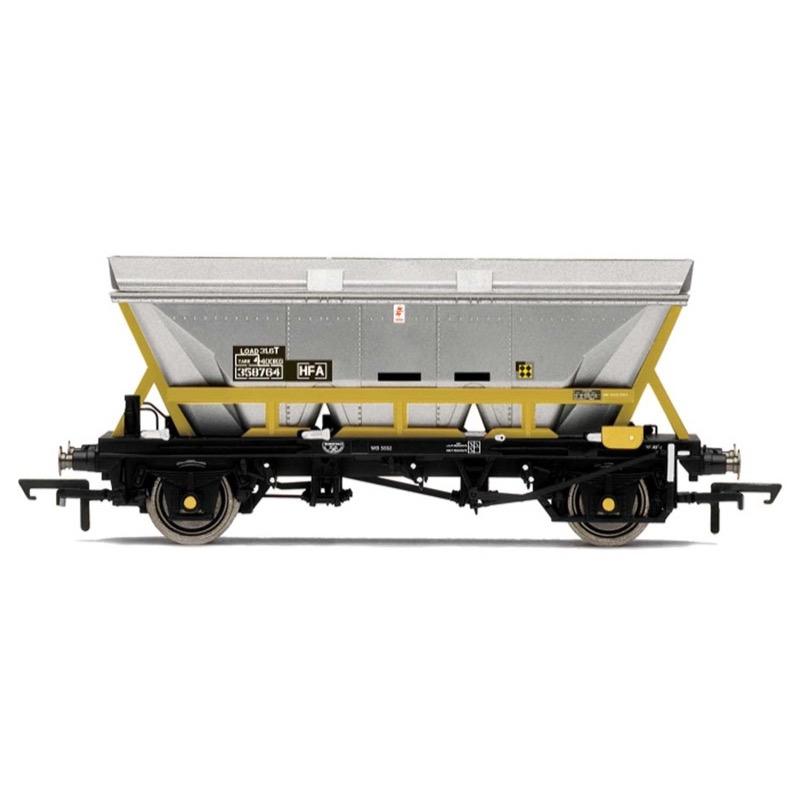
Hornby R60066 OO HFA Hopper BR Coal Sector
25.00
$
<p>Built from 1964 to 1977, HAA wagons were built as method to move coal more efficiently, particularly with the aim of improving to supply of coal to power stations. It was intended that trains of these wagons could run in a continuous loop from the colliery to the power station and back, with machinery I place to allow loading and unloading at slow speeds. In reality it was often the case that the infrastructure to allow this type of running did not exist, particularly at the collieries, but nonetheless these wagons greatly improved coal transfer. With the decline of Britain's coal industry these previously extremely common wagons have now become extremely rare with most having been either scrapped or rebuilt as another form of wagon. Based upon the successful HAA wagon, the HFA design added an aerodynamic canopy designed to stop coal-dust from escaping.</p>
<h3>Specifications</h3>
<ul>
<li>Item Length - Without Packaging (cm): 4.5</li>
<li>Item Height - Without Packaging (cm): 15.6</li>
<li>Item Width - Without Packaging (cm): 9</li>
<li>Item Weight - Without Packaging: 0.09</li>
<li>Item Scale: 1:76 Scale 00 Gauge</li>
<li>License: No</li>
<li>Finish: Painted</li>
<li>Colour: Silver</li>
<li>Gauge: OO</li>
<li>Operator: BR Coal Sector Yellow</li>
<li>Livery: Coal Sector Silver</li>
<li>Minimum Curve (mm): Radius 2</li>
<li>Number of Parts: 1</li>
</ul>
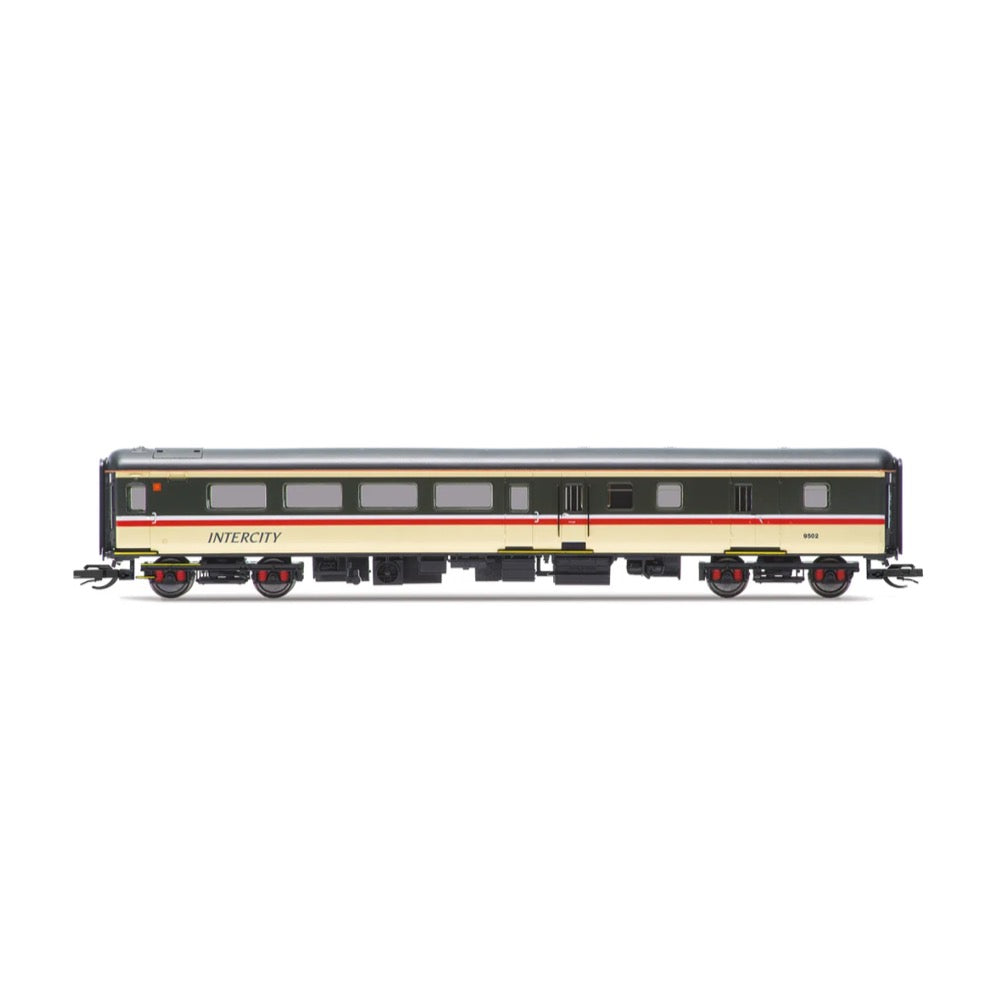
Hornby TT4016 TT BR Intercity Mk2E Brake Standard Open 9502
27.00
$
<p>The British Rail Mark 1 coaches were not suitable for higher speed rail services, with the Mark 1 coaches being a perfect compliment for steam locomotives which saw themselves being replaced by diesel and electric locomotives as the 1960s progressed. The Mark 2 coach was introduced in 1964 and was all steel. While the Mark 2 was a progression of the Mark 1, the two shared almost no common parts, and only a passing resemblance.</p><p>In service, the Mark 2 coaches were commonly seen in the BR Blue and Grey livery and Network South East colours. The coaches were mainly hauled by larger express diesel and electric locomotives such as the Class 40, 47 and 86. As of 2022, the only Mark 2 coaches still in service are those that are part of the Network rail fleet.</p><p>The Mark 2 E coaches were fitted with luggage racks opposite the toilets at the end of each coach. The toilets themselves were reduced in size from the preceding variants. The gangway doors on Mark 2 E coaches were cream folding doors of a plastic construction.</p><h3>Specifications</h3><ul>
<li>Item Length - Without Packaging (cm): 16.8</li>
<li>Item Height - Without Packaging (cm): 3</li>
<li>Item Width - Without Packaging (cm): 2.2</li>
<li>Item Weight - Without Packaging: 0.04</li>
<li>Item Scale: 1:120 Scale</li>
<li>Finish: Painted</li>
<li>Colour: Multiple</li>
<li>Gauge: TT</li>
<li>Operator: BR</li>
<li>Designer: BR</li>
<li>Livery: Intercity Executive</li>
<li>Minimum Curve (mm): Radius 1</li>
<li>Number of Parts: 1</li>
</ul>
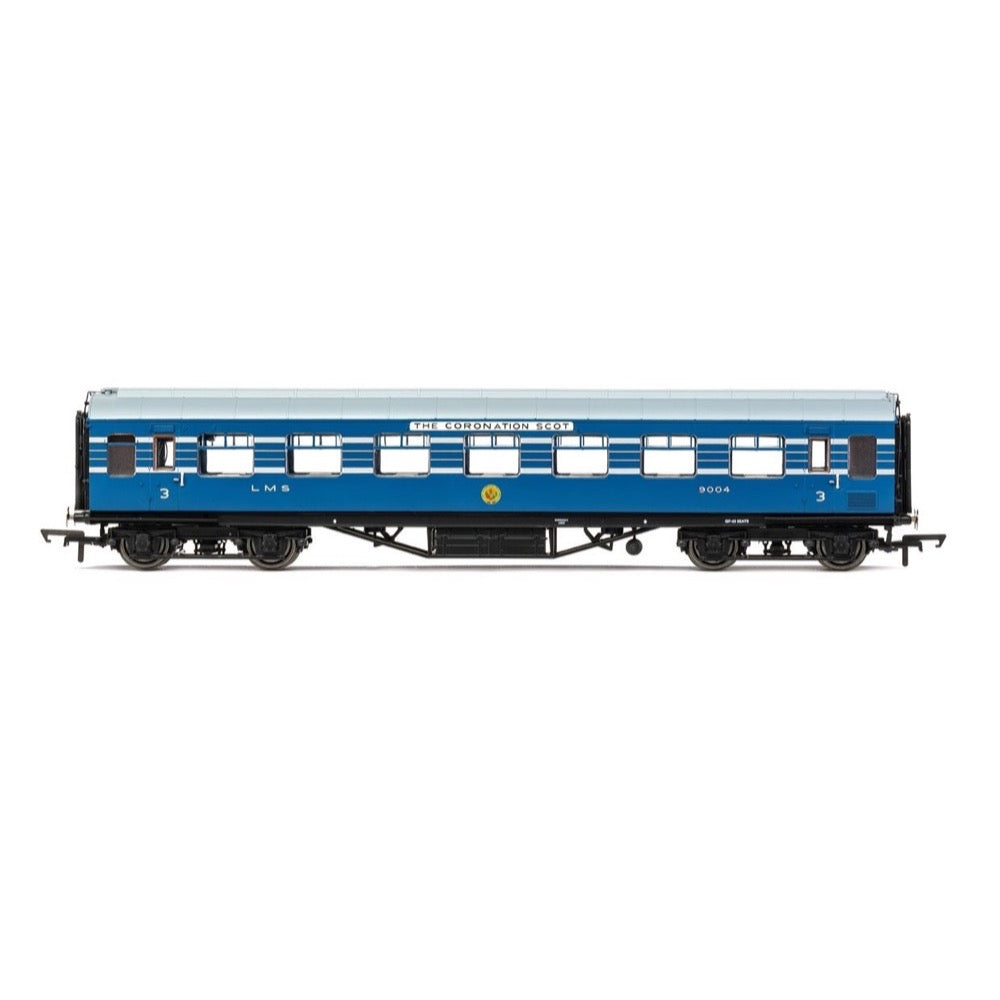
Hornby R40056A OO LMS Stanier D1981 Coronation Scot 57ft RTO 9004
42.00
$
<p>In response to the LNER's 'Coronation' sets the LMS Board announced the advent of a similar train, the 'Coronation Scot'. All of the 'Coronation Scot' Coaches were eventually scrapped, beginning from withdrawals in 1962, with the exception of two of the RK vehicles; 30088 and 30106. These two coaches were converted into Inspection Saloons and both survive to this day as preserved examples.</p>
<h3>Specification</h3>
<ul>
<li>Item Length - Without Packaging (cm): 22.8</li>
<li>Item Height - Without Packaging (cm): 5</li>
<li>Item Width - Without Packaging (cm): 3.5</li>
<li>Item Weight - Without Packaging: 0.13</li>
<li>Item Scale: 1:76 Scale 00 Gauge</li>
<li>Finish: Painted</li>
<li>Colour: Blue</li>
<li>Operator: LMS</li>
<li>Designer: Sir William Stanier</li>
<li>Livery: Coronation Scot</li>
<li>Minimum Curve (mm): Radius 2</li>
<li>Number of Parts: 1</li>
</ul>
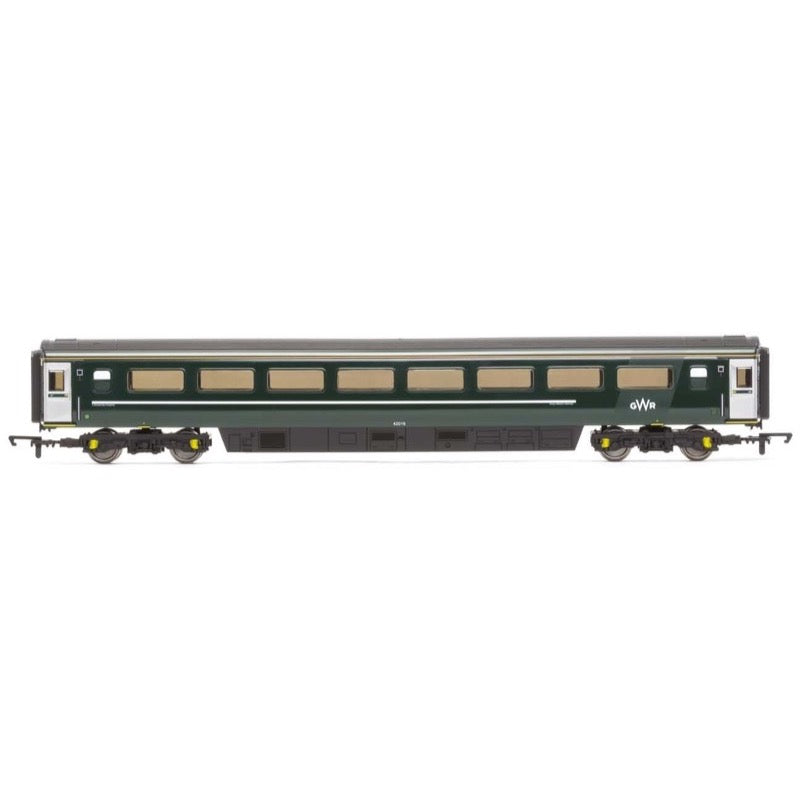
Hornby R4781L OO GWR Mk3 Trailer Standard Open Coach F 42016
37.00
$
<p>The BR Standard Mk.3 coach was introduced to traffic between 1975 and 1988, on both high speed and locomotive hauled services and quickly became a regular sight on Britain's main line services.</p>
<p>In 2014, First Great Western refurbished its Mk.3 first class carriages with interiors that dropped the First Great Western branding in favour of a new GWR logo and the whole company was subsequently rebranded as Great Western Railway (GWR) on 20 September 2015, with rolling stock featuring a dark green livery that echoed that of the former Great Western Railway.</p>
<p>Each model measures 303mm in length and is perfect for adding that modern yet classic twist to your railway collection.</p>
<h4>Includes</h4>
<ul>
<li>1 x Rolling Stock Coach</li>
</ul>
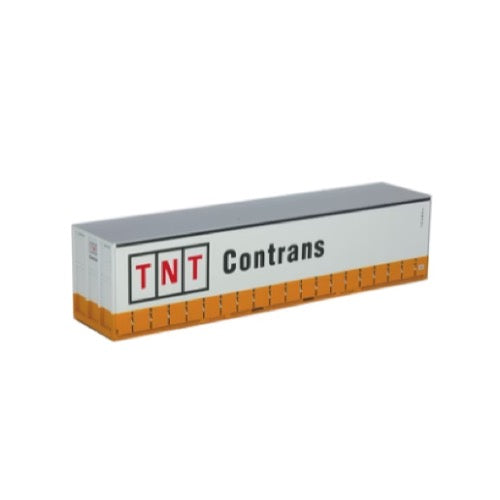
On Track Models 40CS-10a HO 40ft Curtain Sided Container TNT Contrans
17.00
$
<h3>Curtain Sided 40' Containers</h3>
<p>On Track Models has produced a range of HO Scale Shipping Containers that are not only colourful but accurate in their design.</p>
<p>These are the quintessential container design of the late 1980's through to today, these containers has been in service with numerous companies over the years.</p>
<p>Many of these still exist today but not with their original purchasers as many of these companies have been brought out or merged with their competitors.</p>
<p>These containers can be seen on interstate rail services all over Australia.</p>
<h3>Features</h3>
<ul>
<li>
<p>Two HO Scale 40' Curtain Sided Containers</p>
</li>
<li>
<p>Style: TNT Contrans</p>
</li>
<li>
<p>Container numbers: 3NW933 & 3NW978</p>
</li>
<li>
<p>Era covered: Early 1990's to Early 2000's</p>
</li>
</ul>
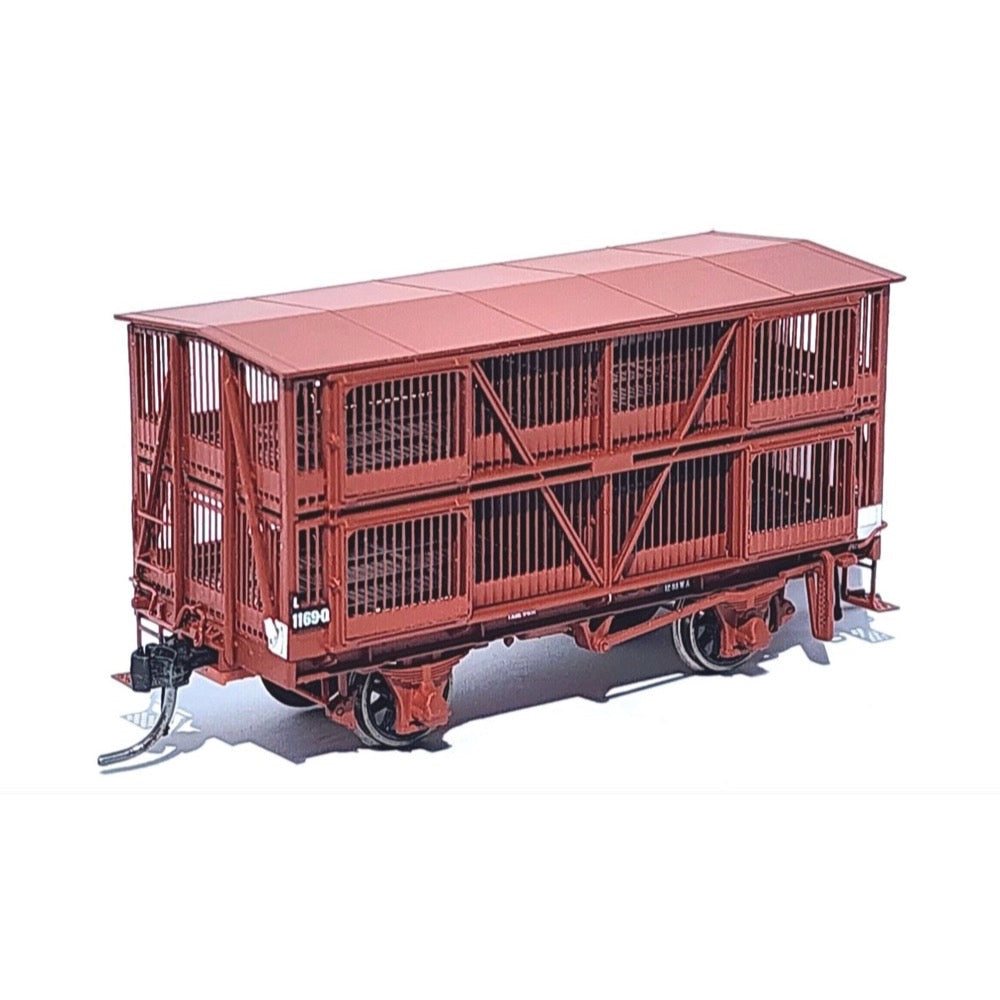
On Track Models LSV-06 Victorian 4 Wheel L Sheep Wagon 1970's Pack
162.00
$
<p>On Track Models LSV-06 Victorian 4 Wheel L Sheep Wagon 1970's Pack</p>
<h3>Features</h3>
<ul>
<li>Six HO Scale Victorian L Sheep Vans</li>
<li>Style: Six 4 Wheel Sheep Vans 5 with Gable Roofs and 1 with Curved Roofs</li>
<li>Wagon numbers: L 484, L 499, L 566, L 999, L 1019, L 1266</li>
<li>Era covered: 1970's</li>
</ul>
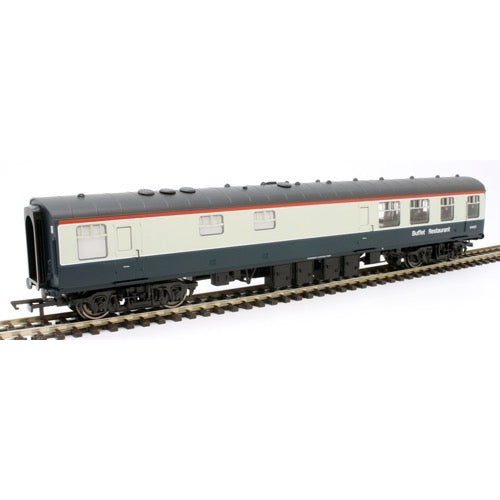
Hornby R4973A OO BR Midland Mk1 RBR M1627 Blue and Grey
37.00
$
<p>The first phase of building British Railways' Mark 1 catering vehicles followed the traditional pattern of dining that had been catered for since Edwardian times, with large Kitchen Cars preparing multiple course dining for consumption in both First and Third Class Dining Cars. However, during the early 1950s it became apparent that social patterns regarding rail travel catering were changing as a direct consequence of WWII attitudes towards dining.</p>
<p>The catering department of British Railways was experiencing a demand from travellers for cheaper and lighter meals as well as an increase in social drinking that was not related to dining. This change in dining patterns meant that the use of a Buffet vehicle, rather than a full Kitchen Car/Dining Car combination, was sometimes a better option and the third phase 1957-62 Mk.1 building program provided many of BR's vehicles with buffet facilities. Not just in addition to full meal provision, but also replacing it. Three prototype catering vehicles were built by Eastleigh to basic requirements set out by the Hotels and Catering Services Department of British Railways, with each stage of construction incorporating feedback from restaurant car staff- these being M1546 Kitchen-Buffet (RKB), W1900 Unclassed Restaurant (RU) and E1700 Buffet-Restaurant (RB).</p>
<p>The RB kept the same kitchen, staff area and seating type as the other two vehicles, but by sacrificing ten seats, the pantry was extended, and a new service counter was introduced for the serving of light refreshments. Propane gas units were introduced for gas cooking. This meant reducing the reliance on electric power which allowed for a smaller dynamo and battery. Access to the water tanks was also improved, along with door access for the catering staff; the single 24Ó doors being replaced with a 'door and a third' arrangement that offered a second 9Ó wide door alongside the main door.</p>
<p>The prototypes were a success and 128 vehicles were ordered, built in four lots between 1960 and 1962 by Pressed Steel and Birmingham RC&W. But in a change from the prototype, some of the window sizes were altered and the serving area was rotated through 90 degrees to become longitudinal.</p>
<p>By 1977, British Rail had come to realise that the existing Mk.1 catering stock would have to be retained for a longer period on long haul services than originally anticipated, especially as the APT and HST programs were behind schedule. The catering fleet was suffering as vehicle availability decreased and services increased, leading to a lack of morale among catering staff and an increase in public dissatisfaction with on-train catering.</p>
<p>In 1960, 850 catering vehicles covered 794 daily booked services but by 1977 this had dropped to 460 vehicles covering over a thousand daily services. Following a high profile public opinion survey, BR realised that catering needed to become part of the corporate InterCity image and an accelerated program of refurbishment ensued. The onboard equipment and interior layout needed to be standardised to ensure that spares were readily available to keep the vehicles in services and that serving patterns were consistent across the fleet to improve working conditions for staff.</p>
<p>The resulting fleet refurbishment of all catering vehicles was based on alterations to the diagram 24 vehicles and was grouped under diagram 33 RB(R). Doors were installed between bars, pantries and kitchens which allowed for manning by fewer staff and interiors were improved by raising illumination levels through fluorescent lighting and removing bulkheads, using brighter colours and having 'wipe-clean' surfaces and seating.</p>
<p>With no Mk.2 catering cars being built from new, Mk.1 restaurants and buffet vehicles were included in Mk.3 rakes on the major main lines until the Mk.3 catering coaches became available. Certain services continued to use them into the early 1990s; The Clansman and the Holyhead trains had RBRs in 1990/1991 and Norwich services still had them in 1993 according to the coaching stock book. Once the Mk.2f RFBs were fully in service, especially on Intercity cross country services, there was no further need for Mk.1 stock and the vehicles were relegated to charter stock.</p>
<h4>Includes</h4>
<ul>
<li>1 x Rolling Stock Coach</li>
</ul>
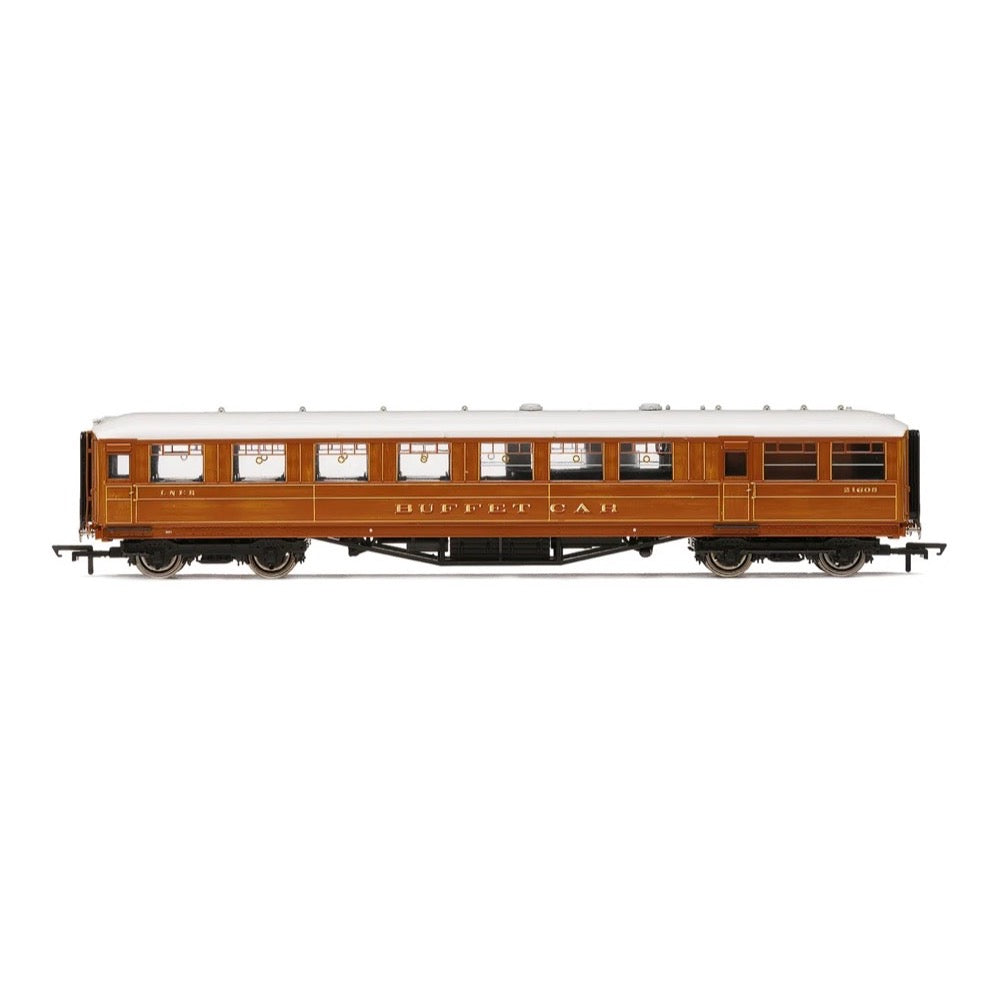
Hornby R4829A OO LNER 616 Gresley Corridor Buffet 21608 Era 3
71.00
$
<p>Despite losing the crown of the largest of the 'Big Four' railway companies to its main rival the LMS, the LNER is notable for having some of the most iconic designs of locomotive and coaches ever devised. Often overlooked due to the prowess of their locomotives, the coaches of the LNER were some of the most resplendent coaches for their period, rivalled only by the privately owned Pullman Coaches.</p>
<p>With stylings rooted in the rolling stock of the large constituent GNR, many LNER coaches were made from panelled teak giving the coaches a unique appearance. Unlike other coach designs of the same era the LNER did not paint their coaches choosing instead to simply apply wax varnish to the exterior and interior wood resulting in the rich natural tones of the wood shining under any light.<br>Represented in 1:76 scale, these coaches feature fully detailed interiors, an accurate representation of the teak wood panelling and metal wheels on each bogie.</p>
<h3>Specification</h3>
<ul>
<li>Item Length - Without Packaging (cm): 24.6</li>
<li>Item Height - Without Packaging (cm): 5</li>
<li>Item Width - Without Packaging (cm): 3.5</li>
<li>Item Weight - Without Packaging: 0.15</li>
<li>Item Scale: 1:76 Scale 00 Gauge</li>
<li>Finish: Painted</li>
<li>Colour: Teak</li>
<li>Gauge: OO</li>
<li>Operator: LNER</li>
<li>Designer: Sir Nigel Gresley</li>
<li>Livery: LNER Teak</li>
<li>Minimum Curve (mm): Radius 2</li>
<li>Number of Parts: 1</li>
<li>Buffer Type: Sprung Metal Buffers</li>
<li>Coupling Type: NEM Tension Lock</li>
</ul>
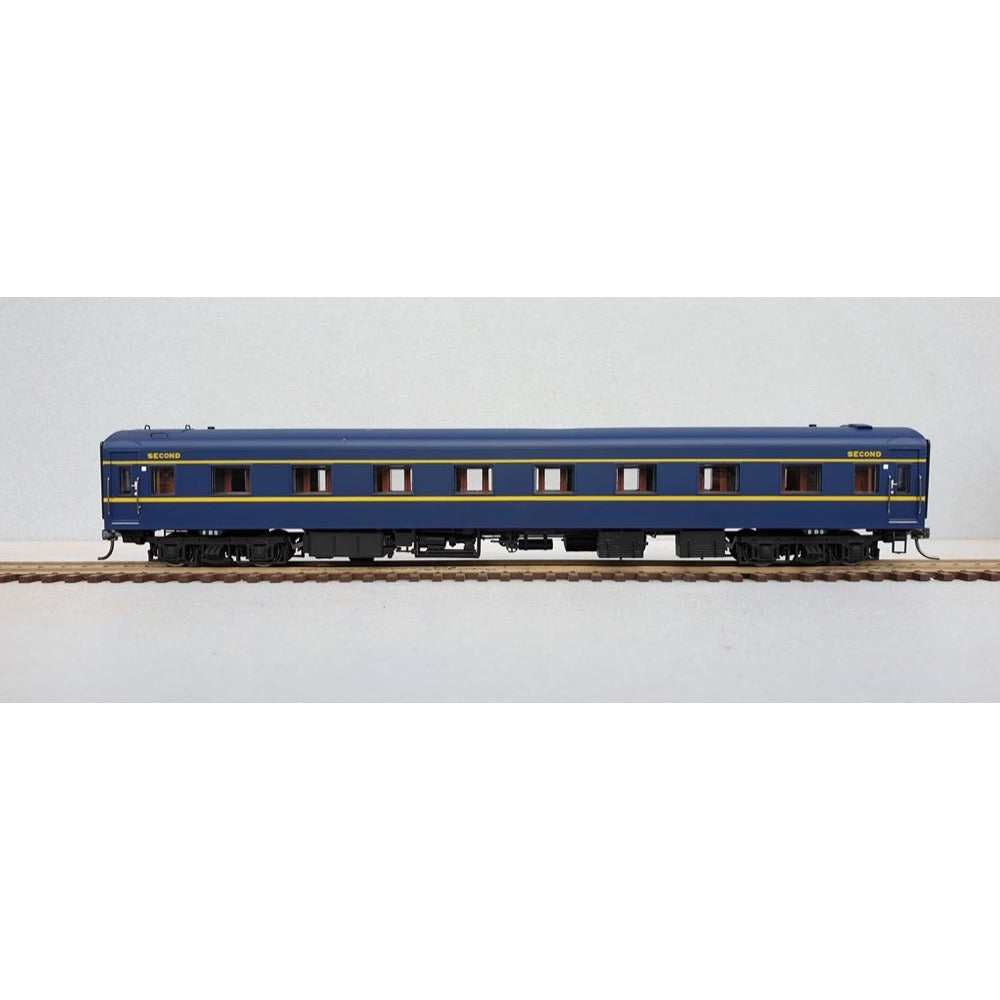
Powerline PC-421D HO 7 BS VR Blue & Gold S Type Carriage Second Sans Serif
69.00
$
<h3>Powerline PC-421D HO 7 BS VR Blue & Gold S Type Carriage Second Sans Serif</h3>


